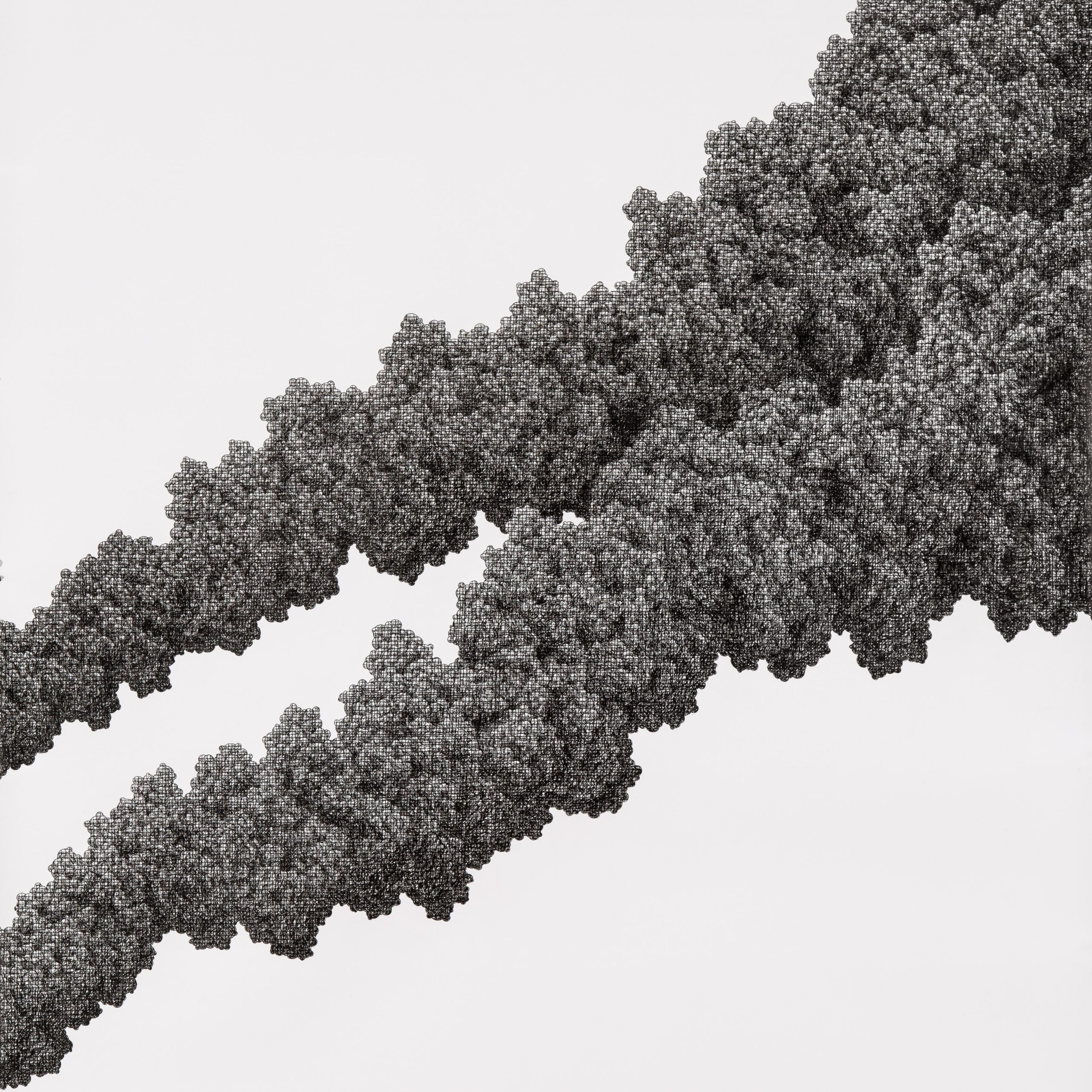Superposition – 2023-24
One of the most intriguing concepts in quantum mechanics is Schrödinger’s cat. It is a thought experiment that highlights the strange and paradoxical nature of a concept called quantum superposition. So it goes that if you seal a cat in a box with something that can eventually kill it, you will not know if the cat is dead or alive until you open the box. So, until you open the box and observe the cat, the cat is simultaneously dead and alive. Or in another term the cat is in a superposition.
The blindfolded figures in my new series happen to also ensnared by the concept of superposition. They exist in a state of ambiguity and multiple possibilities. Just as the cat is suspended in a state of uncertainty, unaware of its own fate, the blindfolded figures dance and laugh with an exuberance that defies their predicament. Embracing the uncertainty of their existence, they laugh and move with a sense of assumed liberation, evoking vulnerability, resilience, and optimism all at the same time. They do so in the face of the nebulous external forces that have placed them in such a predicament. We do not see those external forces. We see only the fruits of the havoc they have wrought. And it is not horror. It is ambivalence. It is the superposition of affect.
The blindfolds act as both a physical and metaphorical shroud of degradation and limitation. They represent the imposition of darkness, robbing the figures of their most vital sense — sight. Deprived of their sight, these figures find themselves in a state of existential need, doubt, and pure vulnerability.
Paradoxical to its customary role as degrader, the blindfold is thus redefined as a liberator. It has opened up new ways of seeing the world, new ways of rebelling, new ways with which to mock the external forces attempting to confine and control. The limitations forged have merely given way to new methods for survival, for expression.
All this serves as a visual testament to humanity’s capacity to confront uncertainty with a spirit both fragile and unyielding. These figures stand as both jesters and philosophers. They offer a darkly humorous commentary on the precarious balancing act between societal dynamics and legal structures of the region.
The unforgiving nature of markers on paper adds an element of risk and vulnerability to the creative process. Much like the figures in the artwork, I embrace the uncertainties and limitations inherent in working with this medium.
In further contemplating the complex nature of producing art in Iran, my intention is to explore deeper connections within the current landscape of the state of Iranian art. The figures in this series were created through a series of live interactions (photoshoots) between myself and other painters, photographers, sculptors, musicians, architects, etc.
In these collaborative sessions, I blindfold the participants. With dance music resonating in the studio, I encourage them to dance freely, liberating themselves from the constraints of their vulnerable predicament. The chosen titles for each painting are drawn from the songs that accompany these dance sessions.
At times, humor becomes a tool, a shared language that transcends barriers and fosters a sense of camaraderie. Laughter punctuates the studio, breaking down the barriers of convention and expectation.
This dialogical approach extends beyond the canvas, inspiring private moments of expression in a safe setting. It fosters a reflective analysis of individual experiences within the Iranian artistic communities. The paintings, born from these collaborative sessions, stand as visual testaments to the resilience, creativity, and shared humanity within a community that persistently confronts the challenges of self-expression in a complex sociopolitical landscape.
This series, therefore, stands as catalyst for dialogue, empathy, and a deeper understanding of the multifaceted nature of the Middle East and a nuanced understanding of the challenges experienced by many in the region. It invites the viewer to a collective journey in search of hope and inspiration in the pursuit of freedom, justice, and self-expression.
Holy domesticated – 2021 – Azad Art Gallery
Later in his next series Holy Domesticated, he tackles a decade-long obsession with early Renaissance art, probing the very essence of holiness within both Eastern and Western traditions of painting and culture. Within his works, Bayat addresses complex dilemmas, such as the thought-provoking question: “One man’s freedom fighter is another man’s terrorist.” By presenting such dilemmas, Bayat encourages viewers to question the underlying constructs of perception and judgment.
Bayat’s thought-provoking art delves into identity, surveillance, holiness, and how people interpret things differently. He challenges viewers to rethink their ideas and consider the various aspects of culture and ideology. His artwork inspires self-reflection and connects art with society and personal introspection.
Domesticated – 2016 – Dastan Gallery
In his Domesticated series, Lohrasb Bayat tackles identity concealment and anonymity in the age of mass surveillance and facial recognition. figures shroud their identities, cloaked under the intense illumination, while their eyes bear a palpable sense of paranoia and anticipation, transfixed on the world beyond the frame, hinting at an imminent and foreboding event. These creations surpass the boundaries of mere aesthetics, becoming a voice for those whose identities are overshadowed by societal prejudices and the omnipresence of surveillance. In his works, he challenges viewers to confront their own perceptions, biases and the power dynamics entrenched within contemporary systems of control.
Monkeys – 2014 – Dastan’s Basement
Lohrasb Bayat’s first solo show at Dastan’s Basement.

































